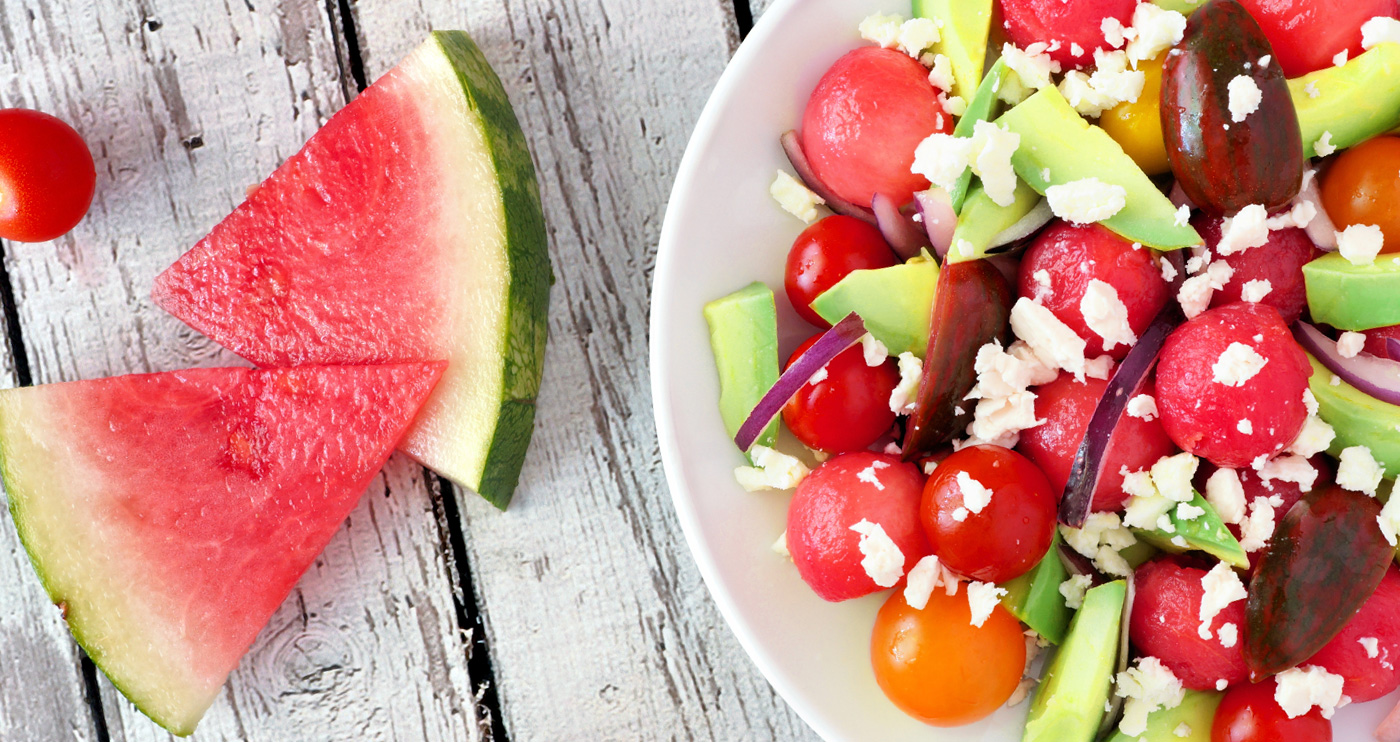
When the mercury rises, so does the risk of dehydration. If you’re like many people, you may find it hard to drink enough water each day — you might even have special alerts set on your phone, or even an app set up just to remind you. Fortunately, even if it’s challenge for you to get your eight glasses a day, you can still boost your water intake by including hydrating foods in your diet. Here are seven of the top picks:
1. Watermelon
As the name implies, watermelon has a very high water content. Every one cup serving of this fruit provides about a half cup of water, as well as electrolytes like potassium and magnesium. Its water content means it’s also very low in calories relative to its weight, at only about 45 calories per cup. Try eating it on its own, or incorporating it into salads — its sweet flavor pairs wonderfully with savory and salty ingredients like feta.
2. Iceberg Lettuce
Iceberg lettuce tends to get skipped over in favor of its more nutritionally-dense cousins like romaine. When it comes to water content, however, it’s hard to beat — at over 95% water, it is the most water-rich variety of lettuce. Its crisp, neutral flavor works in its favor, too. Try using it as a base for salads, or in place of bread or buns for sandwiches.
3. Cucumber
Cucumber is 96% water, making it the food with the highest water content out there. The peel is a good source of fiber, and people on potassium-restricted diets will be happy to know that it’s considered a medium to low potassium food. Add it to salads, serve it in a crudités platter with hummus, or slice and eat it on its own.
4. Zucchini
Often mistaken for cucumber at the grocery store, zucchini is another high-water veggie. One cup of zucchini is about 90% water, only 20 calories, and rich in potassium and vitamin C. Like cucumber, you can eat it raw on its own, added to raw dishes, or turned into noodles with a spiralizer for a no-boil alternative to pasta.
5. Radishes
Radishes are about 95% water, and a great way to add crunch and a bit of spice to your salads. A half cup serving of sliced radishes also provides 135 milligrams of potassium, a gram of fiber, and lots of vitamin C and folate. They’re a pretty sturdy vegetable, so they’re easy to slice and add to salads, julienne for slaw, or carve into attractive and delicious garnishes.
6. Tomatoes
One tomato provides as much as a half cup of water, as well as lots of vitamin A, vitamin C, potassium, fiber, and antioxidants. Like other water-rich foods, they’re also low in calories, at only 32 calories per cup. Add them raw to salads, eat grape or cherry tomatoes on their own, or turn them into a delicious salsa or gazpacho.
7. Spinach
If iceberg lettuce isn’t your bag, don’t worry. Spinach has you covered, too. While iceberg lettuce may beat out spinach’s water content, this leafy green is still an impressive 91% water. It’s also higher in nutrients like folate, potassium, vitamin E, and vitamin A, so it may be worth it to miss out on the extra water for the nutritional benefits. Eat it raw in salads, or add it to soups for a hydrating, nutrient-packed meal.
It’s not always easy to remember to drink water, and many people’s thirst signals end up mistaken for hunger signals. If you find yourself struggling to get enough H2O each day, these water-packed foods can help keep you healthy, happy, and hydrated.